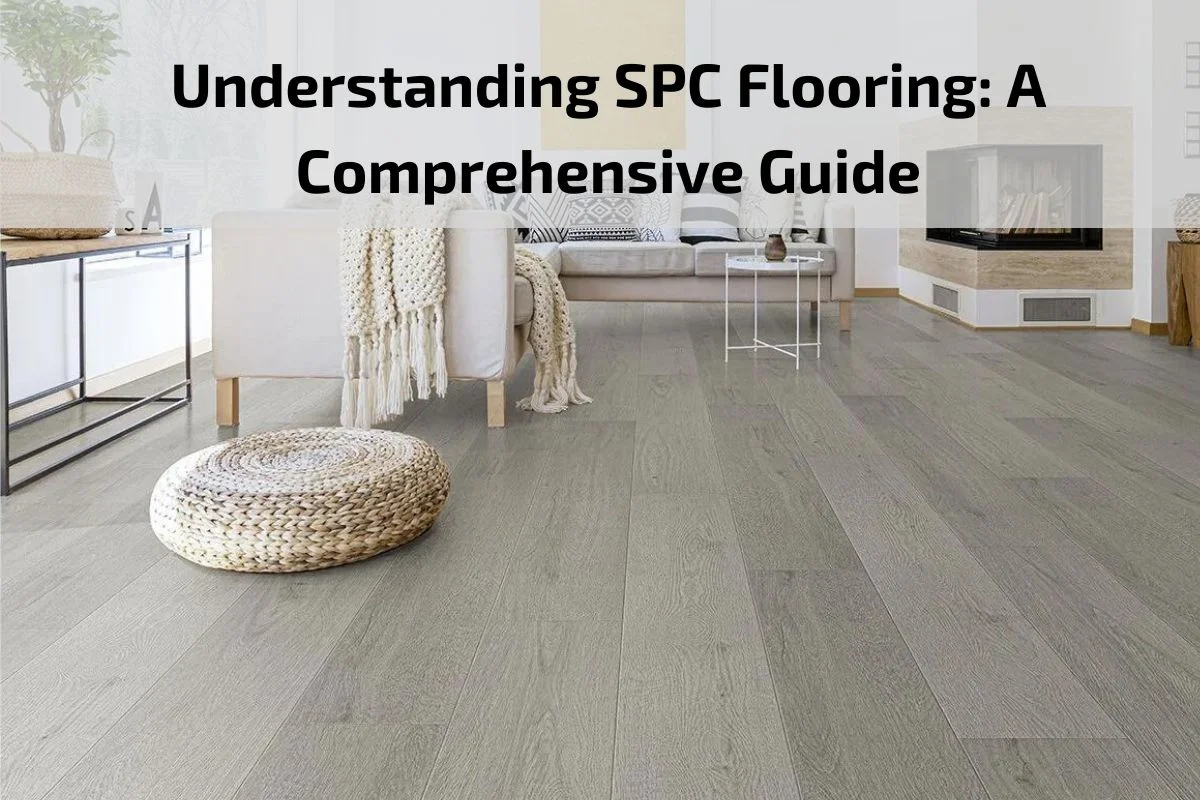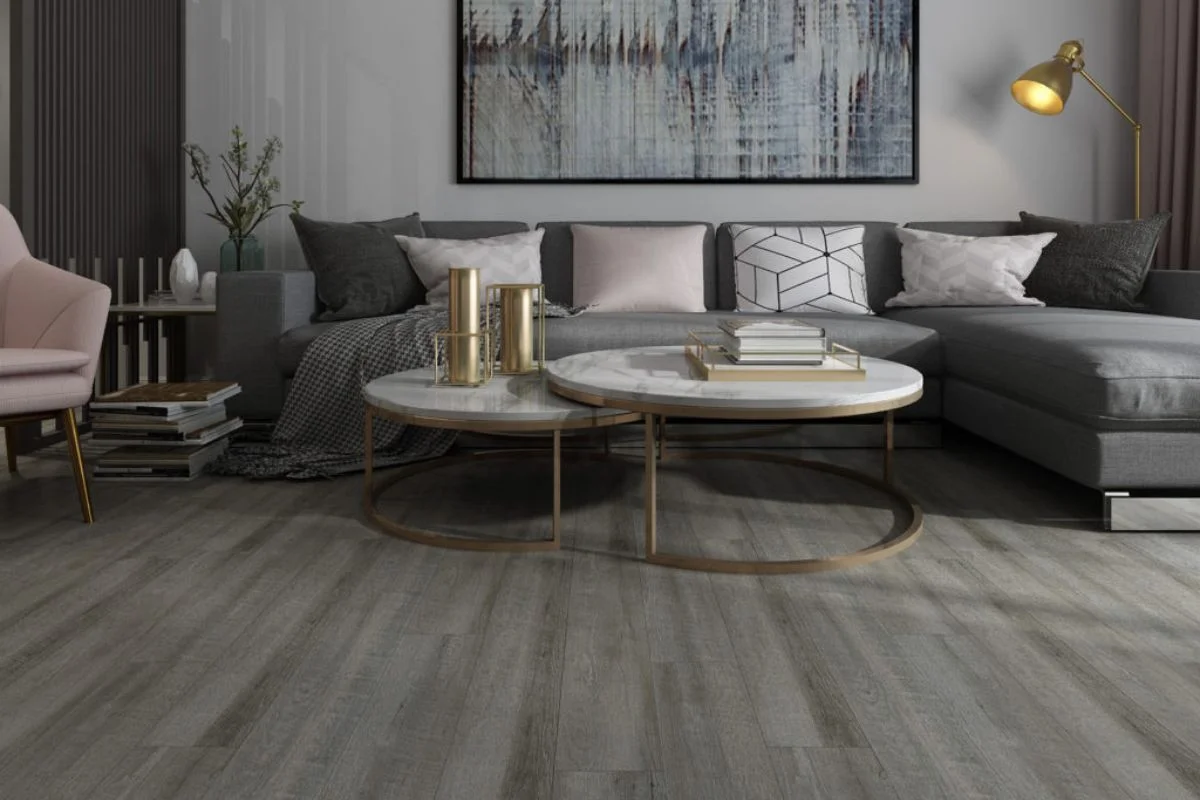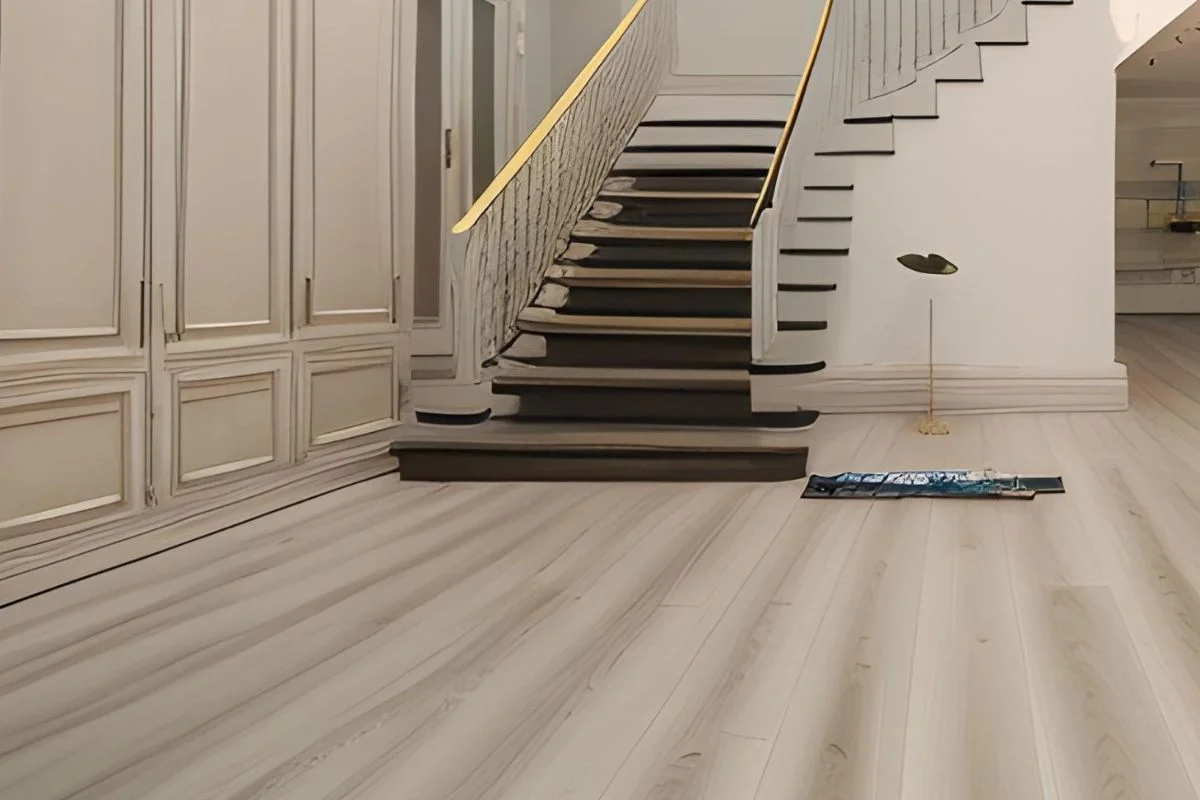Blog
 In the realm of modern flooring solutions, Stone Plastic Composite (SPC) flooring has emerged as a revolutionary option that blends durability, aesthetics, and versatility. With its unique composition and advanced technology, SPC flooring has quickly gained popularity among homeowners, designers, and architects alike.
SPC flooring is a type of rigid core flooring that combines limestone powder and stabilizers with PVC to create a highly durable and resilient material. The result is a flooring solution that offers the authentic look and feel of natural materials like wood or stone, coupled with exceptional performance and ease of maintenance.
In this comprehensive guide, we will delve deep into the world of SPC flooring, exploring its composition, benefits, installation techniques, maintenance tips, and design possibilities. Whether you’re considering SPC flooring for your home, office, or commercial space, this guide will provide you with the knowledge and insights you need to make informed decisions and unlock the full potential of this innovative flooring solution.
In the realm of modern flooring solutions, Stone Plastic Composite (SPC) flooring has emerged as a revolutionary option that blends durability, aesthetics, and versatility. With its unique composition and advanced technology, SPC flooring has quickly gained popularity among homeowners, designers, and architects alike.
SPC flooring is a type of rigid core flooring that combines limestone powder and stabilizers with PVC to create a highly durable and resilient material. The result is a flooring solution that offers the authentic look and feel of natural materials like wood or stone, coupled with exceptional performance and ease of maintenance.
In this comprehensive guide, we will delve deep into the world of SPC flooring, exploring its composition, benefits, installation techniques, maintenance tips, and design possibilities. Whether you’re considering SPC flooring for your home, office, or commercial space, this guide will provide you with the knowledge and insights you need to make informed decisions and unlock the full potential of this innovative flooring solution.
Brief overview of SPC flooring
SPC (Stone Plastic Composite) flooring is a type of rigid core flooring that has gained popularity in recent years for its durability, versatility, and aesthetic appeal. It is composed of several layers, including a UV coating, wear layer, SPC core layer, and attached underlayment. The SPC core layer is made from a combination of limestone powder, polyvinyl chloride (PVC), and stabilizers, resulting in a highly stable and rigid plank.
One of the key features of SPC flooring is its water-resistant and moisture-proof properties, making it suitable for installation in areas prone to moisture, such as bathrooms, kitchens, and basements. It is also highly durable and resistant to scratches, stains, and impacts, making it an ideal choice for high-traffic areas in both residential and commercial spaces.
SPC flooring comes in a wide variety of colors, patterns, and textures, including realistic wood and stone designs, allowing homeowners and designers to achieve the look and feel of natural materials without the maintenance requirements. Installation of SPC flooring is relatively straightforward, with options for floating, glue-down, or click-lock installation methods.
Overall, SPC flooring offers a cost-effective and practical flooring solution that combines the beauty of natural materials with the durability and resilience of modern technology. Its versatility, ease of maintenance, and long-term performance make it a popular choice for a wide range of applications in today’s interiors.
Definition and composition of SPC flooring
SPC (Stone Plastic Composite) flooring is a type of rigid core flooring known for its durability, stability, and resilience. It is composed of several layers, each contributing to its unique properties and performance.
Wear Layer: The wear layer is the topmost layer of the SPC flooring plank. It is a transparent layer made of urethane or PVC that provides protection against scratches, stains, and wear caused by foot traffic.
Decorative Layer: Beneath the wear layer is the decorative layer, which features a high-resolution printed design that mimics the look of natural materials such as wood, stone, or tile. This layer gives SPC flooring its aesthetic appeal and allows for a wide variety of design options.
SPC Core Layer: The core layer of SPC flooring is composed of a mixture of limestone powder, polyvinyl chloride (PVC) resin, and stabilizers. This combination creates a dense, rigid core that provides exceptional stability, dimensional strength, and impact resistance. The limestone powder contributes to the rigidity and density of the core, while the PVC resin adds flexibility and durability.
Attached Underlayment (Optional): Some SPC flooring products come with an attached underlayment layer for added cushioning, sound absorption, and thermal insulation. This underlayment layer helps to reduce noise transmission and provides a more comfortable walking surface.
The composition of SPC flooring gives it several key advantages over traditional flooring materials. It is highly resistant to moisture, making it suitable for installation in areas prone to spills, such as kitchens, bathrooms, and basements. SPC flooring is also resistant to scratches, dents, and stains, making it ideal for high-traffic areas in both residential and commercial settings.
Advantages and Disadvantages of SPC Flooring
Advantages of SPC Flooring:
Durability: SPC flooring is highly durable and resistant to scratches, dents, stains, and impacts. Its dense core and strong wear layer make it suitable for high-traffic areas in both residential and commercial spaces.
Water Resistance: SPC flooring is waterproof, making it ideal for installation in moisture-prone areas such as kitchens, bathrooms, and basements. It can withstand spills, moisture, and humidity without warping, swelling, or buckling.
Stability: The rigid core construction of SPC flooring provides exceptional stability and dimensional strength. It resists expansion and contraction due to temperature changes, ensuring that the flooring maintains its shape and integrity over time.
Easy Installation: SPC flooring is designed for easy installation with a variety of methods including floating, glue-down, or click-lock installation. This makes it a popular choice for DIY enthusiasts and professionals alike.
Low Maintenance: SPC flooring is easy to clean and maintain. Regular sweeping, vacuuming, and occasional mopping with a mild detergent are usually all that’s needed to keep it looking its best.
Wide Range of Designs: SPC flooring comes in a variety of colors, patterns, and textures, including realistic wood and stone designs. This allows homeowners and designers to achieve the desired aesthetic without sacrificing performance.
Disadvantages of SPC Flooring:
Hardness: While SPC flooring is durable, its rigid construction can make it less forgiving underfoot compared to softer flooring options like carpet or vinyl. Some people may find it less comfortable to walk on for extended periods.
Price: SPC flooring tends to be more expensive upfront compared to other types of flooring such as laminate or vinyl. However, its long-term durability and low maintenance requirements may offset the initial investment.
Limited Repair Options: While SPC flooring is resistant to scratches and damage, repairs can be challenging if the flooring is severely damaged or scratched. In some cases, damaged planks may need to be replaced entirely.
Environmental Impact: The production of SPC flooring involves the use of PVC, which raises environmental concerns due to its manufacturing process and potential for harmful emissions. However, many manufacturers offer eco-friendly options and adhere to sustainable practices to mitigate environmental impact.
Installation Techniques for SPC Flooring
Installation of SPC (Stone Plastic Composite) flooring is relatively straightforward and can be accomplished using a variety of techniques. Here are the common installation methods for SPC flooring:
Floating Installation:
- Floating installation is one of the most popular methods for installing SPC flooring. It involves laying the SPC planks over the subfloor without any adhesive.
- The planks are interlocked using a click-lock system, which creates a secure and stable floating floor.
- Underlayment may be installed underneath the SPC flooring to provide cushioning, sound absorption, and moisture protection.
- Glue-down installation involves applying adhesive directly to the subfloor and then placing the SPC planks on top of the adhesive.
- This method provides a strong bond between the SPC planks and the subfloor, ensuring stability and preventing shifting or movement over time.
- Glue-down installation is recommended for areas with heavy foot traffic or where extra stability is required.
- Interlocking installation is similar to floating installation but utilizes a different locking mechanism to connect the SPC planks.
- Instead of a click-lock system, interlocking planks feature tongue-and-groove edges that fit together snugly without the need for adhesive.
- Interlocking installation is quick and easy, making it a popular choice for DIY enthusiasts and professionals alike.
- In some cases, a combination of installation methods may be used depending on the layout of the space and specific requirements.
- For example, glue-down installation may be used around the perimeter of the room, while floating installation is used in the central area.
- Combination installation allows for flexibility and customization to accommodate different subfloor conditions and installation preferences.
- Before beginning the installation process, it is essential to properly prepare the subfloor by ensuring it is clean, level, and free of any debris or imperfections. Subfloor preparation is crucial for achieving a smooth and stable surface for the SPC flooring installation.
- Additionally, it is recommended to acclimate the SPC flooring planks to the room’s temperature and humidity levels before installation. This helps prevent issues such as expansion or contraction of the planks after installation.
Comparing SPC Flooring with Other Flooring Types
When considering flooring options for your home or commercial space, it’s essential to understand how SPC (Stone Plastic Composite) flooring compares to other types of flooring materials. Here’s a comparison between SPC flooring and some commonly used flooring types:
SPC Flooring vs. Laminate Flooring:
- SPC flooring and laminate flooring are both popular choices for homeowners seeking durable and affordable flooring options.
- SPC flooring is more water-resistant and moisture-proof compared to laminate flooring, making it suitable for areas prone to spills and moisture, such as bathrooms and kitchens.
- Laminate flooring is typically less expensive than SPC flooring, but SPC flooring offers superior durability and resistance to scratches, dents, and impacts.
- SPC flooring often features a more realistic look and feel of natural materials like wood or stone compared to laminate flooring.
- Vinyl plank flooring shares some similarities with SPC flooring, including water resistance and ease of maintenance.
- SPC flooring is typically more rigid and stable compared to vinyl plank flooring, thanks to its stone composite core.
- SPC flooring offers greater dimensional stability and resistance to temperature fluctuations, making it suitable for installation in areas with varying climate conditions.
- While both SPC flooring and vinyl plank flooring come in a variety of designs and styles, SPC flooring often provides a more authentic look and feel of natural materials.
- Hardwood flooring is prized for its timeless beauty, authenticity, and natural warmth.
- SPC flooring offers greater resistance to scratches, stains, and moisture compared to hardwood flooring, making it a more practical choice for high-traffic areas and moisture-prone areas.
- Hardwood flooring can be sanded and refinished multiple times to restore its appearance, while SPC flooring does not require refinishing and is more resistant to wear and tear.
- SPC flooring tends to be more budget-friendly compared to hardwood flooring, making it a cost-effective alternative for homeowners seeking the look of wood without the maintenance requirements.
- Ceramic tile flooring is known for its durability, water resistance, and versatility in design.
- SPC flooring offers similar benefits in terms of water resistance and durability but is typically warmer and more comfortable underfoot compared to ceramic tile flooring.
- Installation of SPC flooring is generally quicker and easier compared to ceramic tile flooring, which often requires grouting and sealing.
- SPC flooring can replicate the look of natural stone or tile without the maintenance requirements and cold feel of ceramic tile flooring.
conclusion
In conclusion, SPC (Stone Plastic Composite) flooring emerges as a compelling choice among the myriad of flooring options available today. Its unique combination of durability, water resistance, ease of installation, and aesthetic versatility positions it as a frontrunner for both residential and commercial spaces




